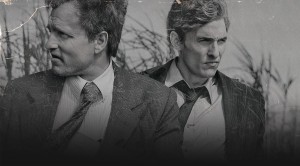Cuarón uses sound and music to bring this dystopian world of infertility, illegal immigration, and societal collapse to life. He uses many different genres of music that indirectly comment on the society and events happening around them. When looking at the titles of the songs alone, you can see the direct relation it has to this movie. In “The Court of the Crimson King” by King Crimson there is a lyric that says, “The keeper of the city keys/Put shutters on the dreams.” I interpreted the meaning as those in power limit the people’s freedom. This is playing while the camera pans over protesters who are yelling about infertility and illegal immigrants are in a cage. It’s a direct relation and perfect addition to the image. “Hush” by Deep Purple has a line that says, “Whenever in doubt, turn off your mind, relax, float downstream.” The lyrics were based on a book on death that argues that psychedelic drugs is essentially similar to the dying process and requires similar guidance, Jasper would smoke often and this lyric correlates to that as well as the suicide drug, Quietus. The one song that stuck out the most was “Ruby Tuesday” by The Rolling Stones just because it was the most obvious connection the movie had with song choice. The lyrics where eerily related. There is a stanza that has the words,
“Still I’m gonna miss you…
Don’t question why she needs to be so free
She’ll tell you it’s the only way to be
She just can’t be chained
To a life where nothing’s gained
And nothing’s lost
At such a cost
Goodbye, Ruby Tuesday”
Jared’s wife is unresponsive and almost trapped in her own body. Not only she is trapped in herself but everyone seems trapped in this world “where nothing’s gained and nothing’s lost.” At this time Jared feeds her the suicide pill and in an ultimate goodbye and setting her free. The music is one of many parts to the movie that can be analyzed. Cuaróns use of music really helped me connect with this movie on a deeper level and love it even more.

